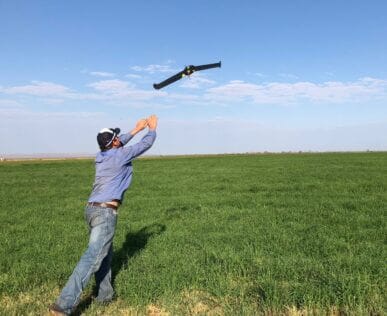Aviassist's mission is to provide the best drone training available on the market that is professional, relevant and valuable
- Ross Anderson, Aviassist Managing Director
When is a drone licence required
Individuals using drones for commercial purposes need a Drone Licence or accreditation from the Civil Aviation Safety Authority (CASA).
Once a drone weighs more than 2kg, a Drone Licence for the category and weight of the drone is required, unless operating over your own land, for no remuneration. Once a drone weighs more than 25kg, a drone licence is required for the specific type of drone.
| Fixed Wing | Multirotor | Helicopter | Powered Lift |
| <7kg | <7kg | <7kg | <7kg |
| <25kg | <25kg | <25kg | <25kg |
| Drone specific | Drone Specific | Drone Specific | Drone Specific |
How to get a drone licence
To acquire a Drone Licence, a five-day drone training course must be undertaken on the category of drone you wish to operate. The course will consist of a theory and practical training element, and a theory and practical test. Initial drone training courses will include an Aeronautical Operator’s Certificate to allow the use of aviation radio to communicate with other airspace users. Initial training is typically undertaken on multirotor category drones.
A Drone Licence is officially referred to as a Remote Pilot Licence (RePL), and there are no prerequisites other than acquiring an Aviation Reference Number from CASA. The RePL will allow operations for the type of drone within the Visual Line of Sight of the drone pilot. To fly Beyond the Visual Line of Sight, an additional exam (BVLOS OCTA) must be passed.
Once licensed you can upgrade the RePL to include other types of drones or conduct advanced training such as Extended Visual Line of Sight, Beyond Visual Line of Sight or Night Visual Line of Sight.
Operating under a Remote Operator Certificate
To use the privileges of a Remote Pilot Licence, drone operations must be conducted under a Remote Operator Certificate (ReOC). A ReOC is a certification for a company or organisation to operate drones commercially. Each operator is likely to have different authorisations allowing them to conduct the drone operations efficiently.
- If you are working for someone or seeking employment you will require just the Remote Pilot Licence.
- If you own or manage an organisation new to drones, both the Remote Operator Certificate and the Remote Pilot Licence will be required.
Drone Licence upgrade from 7kg Multirotor to 25kg Multirotor
Upgrading your 7kg Multirotor Drone Licence to 25kg increases the options of aircraft and payload, substantially increasing capability in the field. The weight of many commercial off the shelf remote aircraft is above the 7kg limitation imposed by many initial Drone Licenses.
Drone training for Multirotor 25kg is conducted using the Aviassist fleet of DJI Matrice 600 Pro, a hexacopter with a Maximum Takeoff weight of 15.5 kilograms. There is no additional theory or theory examination to increase the weight category from 7kg to 25kg though a detailed brief will be conducted on the aircraft.
We begin training where the initial Drone Licence concluded, confirming competency on the DJI Phantom 4. From here, we go through a training package on the DJI Matrice 600 Pro before completing a flight test. On successful completion of the flight test, your licence submission is made to CASA to upgrade the RePL to the higher weight category.
Training is planned over two days and is competency-based; in most cases, we can complete the training in a shorter timeframe. See scheduled training dates and locations.

Drone Licence upgrade to include Fixed Wing 7kg
Fixed-wing remote aircraft offer a substantial increase in efficiency, covering a larger area in a shorter amount of time.
Drone training for Fixed Wing 7kg is conducted using Aviassist’s fleet of Sensefly Ebee, a proven platform with intuitive ground control software. A two-hour brief is conducted on operating fixed-wing aircraft, followed by a brief on the Sensefly Ebee. A short examination is conducted before heading out to the field to perform the practical component of the Drone Licence upgrade.
Training is planned over two days and is competency-based; in most cases, we can complete the training in a shorter timeframe. See scheduled training dates and locations.

Drone Licence upgrade to include Powered Lift 7kg
Powered Lift aircraft brings together the efficiency of a fixed-wing with the vertical take-off and landing capabilities of a Multirotor type aircraft.
Drone training for a Powered Lift 7kg upgrade is conducted using Aviassist’s fleet of Wingta One or Quantum System Trinity F90 platforms. The Wingtra is a tailsitter type design, and the Trinity is a tiltrotor type design. We suggest training on the design closest to the one you plan to operate. A two-hour brief is conducted on aspects of operating Powered Lift aircraft, followed by a brief on the training aircraft. A short examination is conducted before heading out to the field to perform the practical component of the Drone Licence upgrade.
Drone training is planned over two days and is competency-based. In most cases, we can complete the training in a shorter timeframe. See scheduled training dates and locations.

